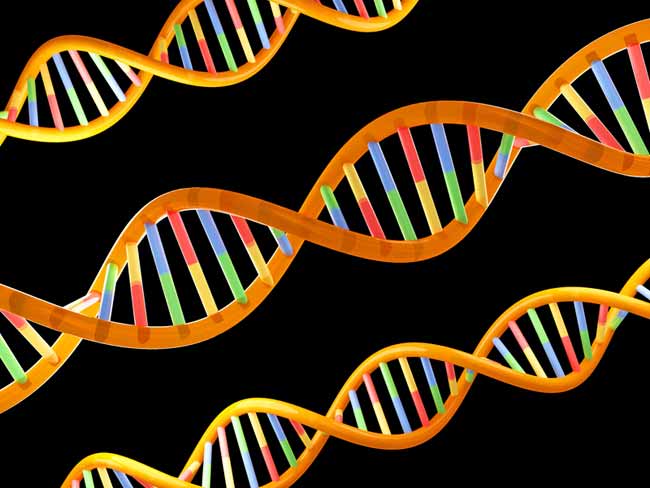Mysterious DNA Found to Survive Eons of Evolution

Scientists have discovered mystery snippets of mammal DNA that have survived eons of evolution and yet have no apparent purpose. The finding reveals just how much we don't know about the secrets hidden in our genome and that of other animals.
Most genes change throughout evolution via mutations; useless ones eventually get weeded out of the population while the helpful modifications take hold. However, about 500 regions of our DNA — the body's instruction code made up of base pairs of molecules — have apparently remained intact throughout the history of mammalian evolution, or the past 80 million to 100 million years, basically free of mutations.
"Mutations are introduced into these regions just as they are everywhere else, but they're swept out of the genome much more quickly," said researcher Gill Bejerano, professor of developmental biology and computer science at Stanford University. "These regions seem to be under intense purifying selection — almost no mutations take hold permanently."
And what's more, many of those sequences do not appear to code for any obvious function, or phenotype, in the body. Researchers suspect they do serve an important purpose, but have yet to figure out exactly what that purpose is. (These sequences are not the same as most non-coding or "junk" DNA, for which no function has been identified, because those sections are not so well-preserved.)
Ultraconserved regions
The researchers call these mystery snippets "ultraconserved regions," and found that they are about 300 times less likely than other regions of the genome to be lost during the course of mammalian evolution. Bejerano and his graduate student Cory McLean detailed the finding in the journal Genome Research.
The fact that these segments haven't been weeded out by natural selection implies that they serve an important function in mammals. Yet mice in the lab bred to lack four of these DNA strands appear healthy and don't seem to be missing any vital genes.
Sign up for the Live Science daily newsletter now
Get the world’s most fascinating discoveries delivered straight to your inbox.
Wondering if the odd results were simply some fault of the lab experiment, and perhaps the mice really weren't as well off as they seemed, the researchers investigated whether any other mammals were also blithely living without these regions.
Amazingly, they found that was not the case. The researchers compared ultraconserved sequences of at least 100 base pairs shared by humans, macaques and dogs with the DNA of rats and mice. They found that less than one-tenth of 1 percent of the segments shared among the primates and dogs were missing in the rodents. In contrast, about 25 percent of regular, not ultraconserved, regions in the first group were absent in the mice and rats.
"What's striking about this research is that [the regions] really are almost never lost," Bejerano told LiveScience. "You're asking if a species can live without these regions, and the resounding answer from our paper is that they seem to have an effect that is strong enough that evolution would weed [individuals without the regions] out of an evolving population."
Potential purposes
Scientists have some guesses about what these strange segments might be used for. Perhaps these DNA strands actually code for multiple layers of information, Bejerano suggested. In that case, each layer could be redundant, with other segments serving the same purpose in other contexts, but together they provide a vital backup system.
Or, they could be crucially important, but only at specific times in a species' history.
"Imagine that these regions somehow protect you from a disease that only strikes the population every once in a while," Bejerano said. "Once every 10,000 years you have this cleansing event, and only those with the region would actually stick around. That's one guess."
Mysterious DNA
For all the major advances in genome science in the last decades, there are still many basic questions left to be answered.
For one thing, though researchers have made strides in understanding what many genes do, there are many more areas of DNA that remain baffling.
"If you pick a particular region in the genome at random and ask me, 'What does this region do?' there is a very high likelihood that I would tell you, 'I don’t know,'" Bejerano said in a phone interview. "That makes for a lot of mysteries that are still out there."
In addition to particular sequences of DNA that puzzle scientists, there are many basic questions about the workings of DNA for which answers have so far eluded researchers.
"We have very good guesses, but how the genome does its thing is by and large yet to be revealed," Bejerano said. "It's exactly the same in every one of our cells, but each cell behaves very differently. There's a lot more we have to understand in the relationship between genomics and developmental biology."
The research was supported by a Stanford Bio-X graduate fellowship and an Edward Mallinckrodt, Jr. Foundation junior faculty grant. Bejerano is a Sloan research fellow and a Searle scholar










